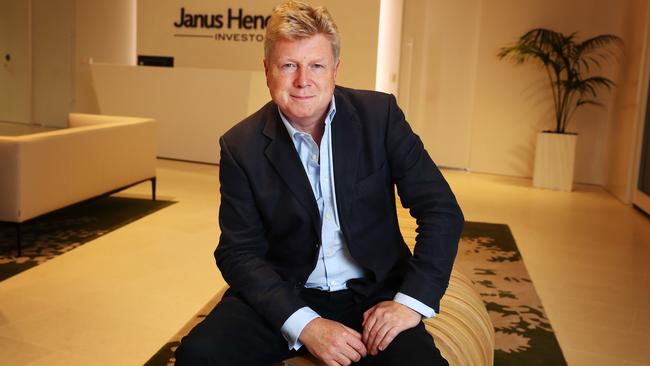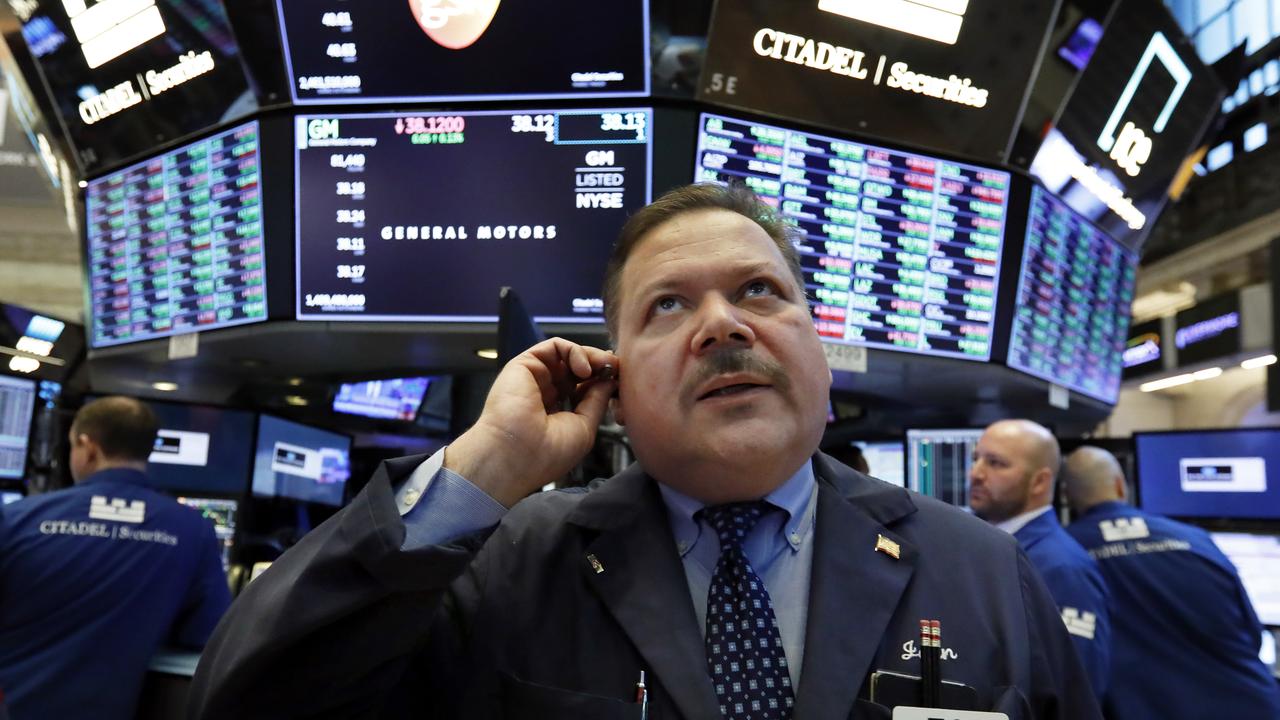Biggest merger benefits still to be realised for Janus Henderson
Janus Henderson has flagged mandate wins, a strong pipeline of new business and merger synergies in its quarterly results.

Global fund manager Janus Henderson has flagged mandate wins, a strong pipeline of new business and on-track merger synergies in its quarterly results at the start of next month.
Talking exclusively to The Australian on the first anniversary of the merger, global head of distribution Phil Wagstaff and Australian head Matt Gaden said they were more than happy with their achievements to date, although the biggest benefits of the merger were yet to be realised.
“I’m particularly pleased with the amount of cross-selling that’s occurring by introducing other strategies to existing clients,” Mr Wagstaff said. “The merger synergies are on track but it hasn’t borne fruit yet in the absolute flow. When I look at pipeline, I’m building for new business — that is going off the charts. It will tip into flow eventually but it can take up to two years.”
Mr Gaden, who has been acting head of Australia since the abrupt departure of Rob Adams to rival fund manager Perpetual in May, confirmed Janus Henderson would reveal a major new investment mandate in its quarterly results, significantly increasing funds under management.
“It’s not just a big mandate win but a strategic partnership,” he said.
“We now have a couple of these and they are part of the response to consolidation — in both channels now — courtesy of the royal commission.
“There’s probably a limit to how many strategic partnerships we can entertain, but I think we will have two or three where we are deeply enmeshed.
“Where we’re getting the best traction is in the traditional channels and we’re increasingly seeing this desire to have a manager with a suite of offerings that’s agnostic in its investment approach.”
Janus Henderson had $78bn of assets under management in Asia and $484bn globally as of March.
It’s been a tough period for active managers since the financial crisis as record-low interest rates, quantitative easing and downward pressure on fees favoured passive funds. But Mr Wagstaff feels the outlook is bright for active fund managers who can differentiate themselves.
“This year you have more volatility sharemarkets trending sideways-to-down, so there is an opportunity there for active funds to make money, but it’s going to be relative to passive funds,” he said. “It’s very hard for long-only products to make you money in a down market.
“I think the big question right now is whether you should be in cash, bonds, equities, alternatives, property or infrastructure. People are nervous about the end of the bull equity market and the end of the bond bull market and maybe the start of the bond bear market. There’s a bifurcation of views. Equities are still worth investing in, relative to bonds, but it is a relative asset-class game.”
Another challenge for active funds is a trend towards internalisation by the big super funds.
“We have to be differentiated to compete,” Mr Gaden said. “The supers will do the things they can do and that’s probably long-only equities and vanilla fixed interest. They might even have some expertise elsewhere, but the things they find harder to do are probably emerging markets equities and small-to-mid cap equities. This internalisation theme is quite strong. On the surface, it looks like a threat (to us) but we find that, where we can be relevant, we’re winning business.”
But Mr Wagstaff recognises there continues to be inexorable downward pressure on fees.
“The most important trend, which everyone acknowledges, is fees are going down,” he says.
“That’s because you’ve got a threat from passive funds, a threat whereby intermediaries globally are looking to drive down the cost of funds management to their clients, and we’re in an oversupplied market. Part of the rationale for the merger was to be more able to absorb that fee reduction.
“You may have small and mid-cap products which are capacity-constrained that are performing extremely well because you have some pricing power. In other areas that are being arbitraged by passive, you don’t have any pricing power. On average, probably about a one basis point margin erosion per annum is what you can expect. So forget about where you started, if we are 10 years on from now, that’s probably 10 basis points less than where you were.”
Indeed Mr Wagstaff doesn’t necessarily see any floor on fees, given the extent of the disruption and excess capacity among active fund managers caused by the rise of exchange traded funds.
“The only way to make your product worth paying for is to differentiate it. There are certainly competitors who are beginning, in the case of some boutiques, to offer investment management for free, but with a performance fee for any alpha they generate, there’s no fixed cost coverage.”
The other way Janus Henderson is combating pressure on fees is through flexibility on pricing. For its institutional clients it will either take a flat fee or a lower flat fee with a performance fee.
“We are happy to back ourselves in either of those fee arrangements globally,” Mr Wagstaff said.
“What’s interesting is that views among clients are polarised — some love performance fees because it aligns our interests, while others don’t believe in performance fees because it leads to short-termism. The most important thing for us is that we can offer both. Fee pressure is there but brand, quality of product, strategy, capacity and performance all help you protect margin.”
As for whether Janus Henderson will consider offering ETFs for some of its active strategies in Australia, Mr Wagstaff wants to make sure the fund manager’s intellectual property is adequately protected.
“We do offer some active ETFs in the US, but one of the things we are concerned about, are trying to get our heads around right now, is that while we have the operational capability to build them, and we think they are in demand, one of the quid pro quos of an active ETF is that you’ve got to give transparency on the underlying portfolio within a short time frame.
“What we’re trying to work out is, to what extent does that transparency compromise our ability to protect the intellectual property of our funds and whether that trade-off is worth it.
“It’s a key issue that we need to overcome. For example, if you launch an active ETF in one market that’s based on strategies in other markets, you’re going to have to tell the world what’s in your portfolio, so we’ve got think hard about whether that’s giving away our intellectual property.
“Operationally, we have the capacity to build these things in-house, so we are in a better place than most. We already have an ETF business called Velocity Shares in the US from which we can leverage the expertise. If I were a betting man, I would say we will be at market with these in the future, but how we do it and the amount of disclosure is something we’re thinking through right now.”


